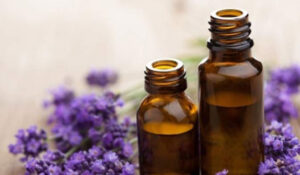 Essential oils have been used for more than a thousand years for countless health problems and conditions as well as for use in daily living (cleaning, perfumes, etc.). We provide a private line of essential oils under the label Essential Essence that are available for retail purchase and wholesale at discounted prices. These oils are of extremely high quality! And because they are not sold through network marketing, discounts are available for therapists and others who purchase larger volumes for resale in their own practices.
Essential oils have been used for more than a thousand years for countless health problems and conditions as well as for use in daily living (cleaning, perfumes, etc.). We provide a private line of essential oils under the label Essential Essence that are available for retail purchase and wholesale at discounted prices. These oils are of extremely high quality! And because they are not sold through network marketing, discounts are available for therapists and others who purchase larger volumes for resale in their own practices.
What are Essential Oils?
Essential oils are extracted from the aromatic essences of certain plants, trees, fruit, flowers, herbs, and spices. They are natural, volatile oils with identifiable chemical and medicinal properties. Over 150 essential oils have been extracted, each one with its own scent and unique healing properties.
Essential Oils in Action
Despite considerable research, the chemistry of essential oils is not fully understood. Each oil is composed of at least 100 different chemical constituents, which are classified as aldehydes, phenols, oxides, esters, ketones, alcohols, and terpenes. There are also many other chemical compounds that have yet to be identified. The oils and their actions are extremely complex. All the oils are antiseptic, but each one also has individual properties; for example, they may be analgesic, fungicidal, diuretic, or expectorant. The collective components of each oil also work together to give the oil a dominant characteristic. It can be relaxing, as in the case of chamomile, refreshing, like the citrus grapefruit, or stimulating, like the aromatic rosemary.
Within the body, essential oils are able to operate in three ways: pharmacologically, physiologically, and psychologically. From a pharmacological perspective, the chemical components of the oils react with the body chemistry in a way that is similar to drugs, but slower, more sympathetic, and with few side-effects. Essential oils also have notable physiological effects. Certain oils have an affinity with particular areas of the body. For example, rose has an affinity with the female reproductive system, while spice oils tend to benefit the digestive system. The oil may also sedate an overactive system, or stimulate a different part of the body that is sluggish. Some oils, such as lavender, are known as adaptogens, meaning they do whatever the body requires of them at the time. The psychological response is triggered by the effect that the aromatic molecules have on the brain.
Essential oils are not all absorbed into the body at the same rate. They can take 20 minutes or several hours, depending on the oil and the individual body chemistry of the person being treated. On average, absorption takes about 90 minutes. After several hours, the oils leave the body. Most oils are exhaled while others are eliminated in the urine, feces, and perspiration.
To preserve your oils, always store them tightly closed in a cool dark place. Heat will cause the oils to evaporate and the light will alter them chemically, reducing their effectiveness.
Cautions
- Citrus oils are photosensitive. Avoid sun exposure to any area of the body where these oils have been applied for 24-72 hours. Extreme sunburn can result.
- When using oils on an infant, the oils should always be diluted with a carrier oil.
- Because of the extreme volatility of essential oils, they can lead to contact sensitivity and skin irritation. If any oil leads to this reaction it should be discontinued immediately.
Washing oils off of skin: Oil and water do not mix. When washing oils off of the skin apply soap first (without water) and scrub thoroughly. Then rinse with water. Applying water first will drive the oil deeper into the skin.
Neat: When an oil is neat it is pure essential oil with no carrier oils. On our website, if there is a ratio following the name of the oil, it is blended with a carrier oil. The first number is the percent of essential oil while the second number is the percent of carrier oil.
Carrier oils: Fractionated coconut oil (FCO) and Jojoba oil are beneficial for application to the skin. Grape seed oil (GSO) of beneficial for internal use.
Reasons for mixing essential oils with carrier oils:
- To increase surface area for absorption.
- To slow and regulate absorption into the body.
- To avoid burning and skin sensitivity with certain oils.
- To decrease the cost of certain oil combinations that would otherwise be cost restrictive.
Applications and Uses
- Diffusion is when the oil is released into the air. This may be done with air diffusers or by putting 10-12 drops in a spray bottle with water, shaking vigorously, and spraying around a room.
- Topically, oils may be applied over the area of complaint. The bottoms of the feet and ears are also good for application because of the large number of acupuncture points in those areas of the body.
- Inhalation is when the oil is directly breathed in through the nose.This allows the oil to be directly absorbed into the brain through the first cranial nerve (olfactory nerve). This should typically be done in conjunction with any other application in order to speed the effects of the oil in the body through neurological stimulation. Inhalation of some oils can lead to headaches, so start with light inhalation.
These statements have not been evaluated by the FDA and are not meant for medical advice. For medical advice consult your physician.
